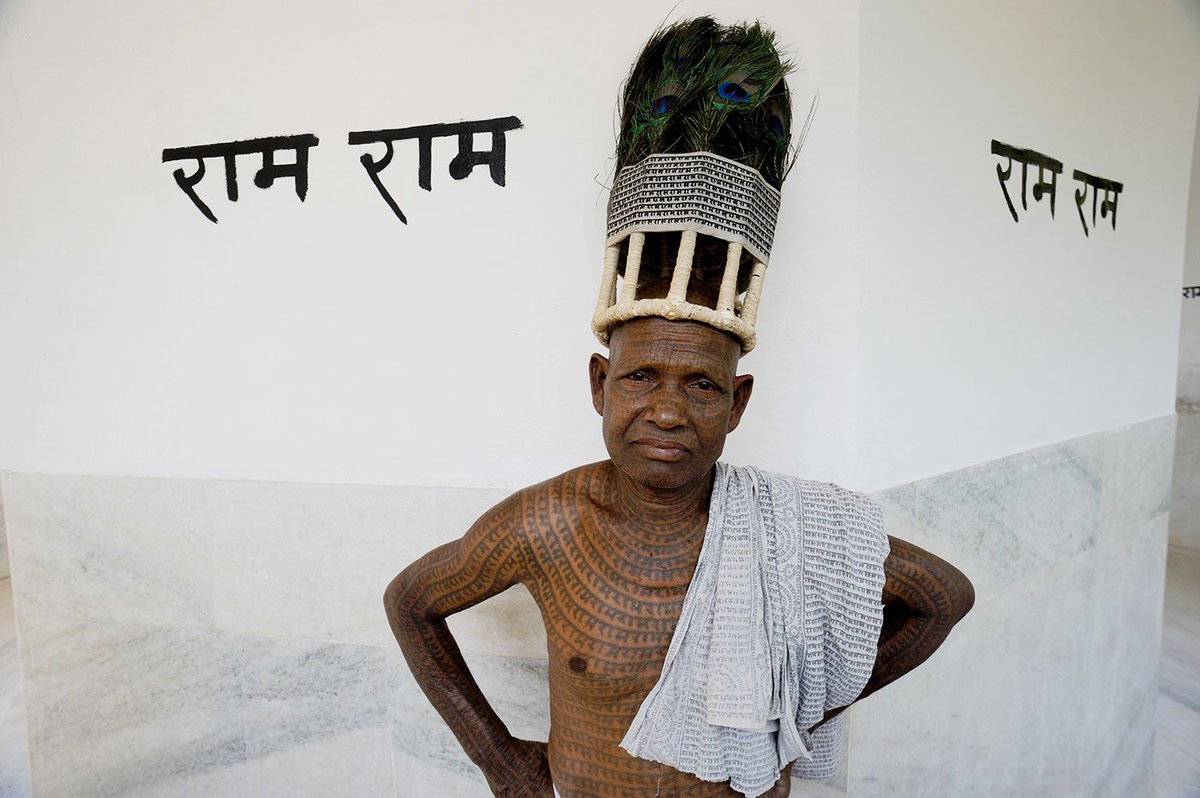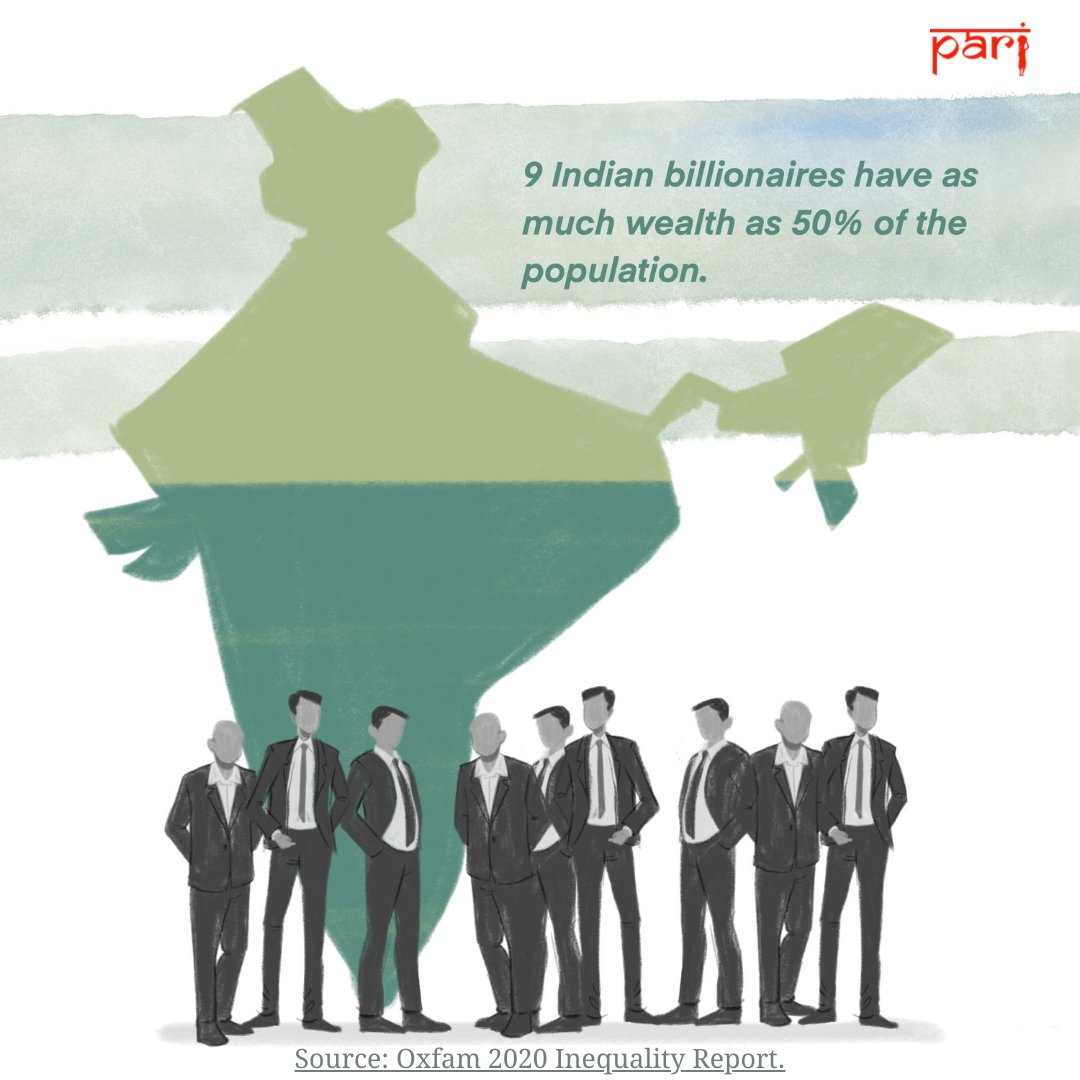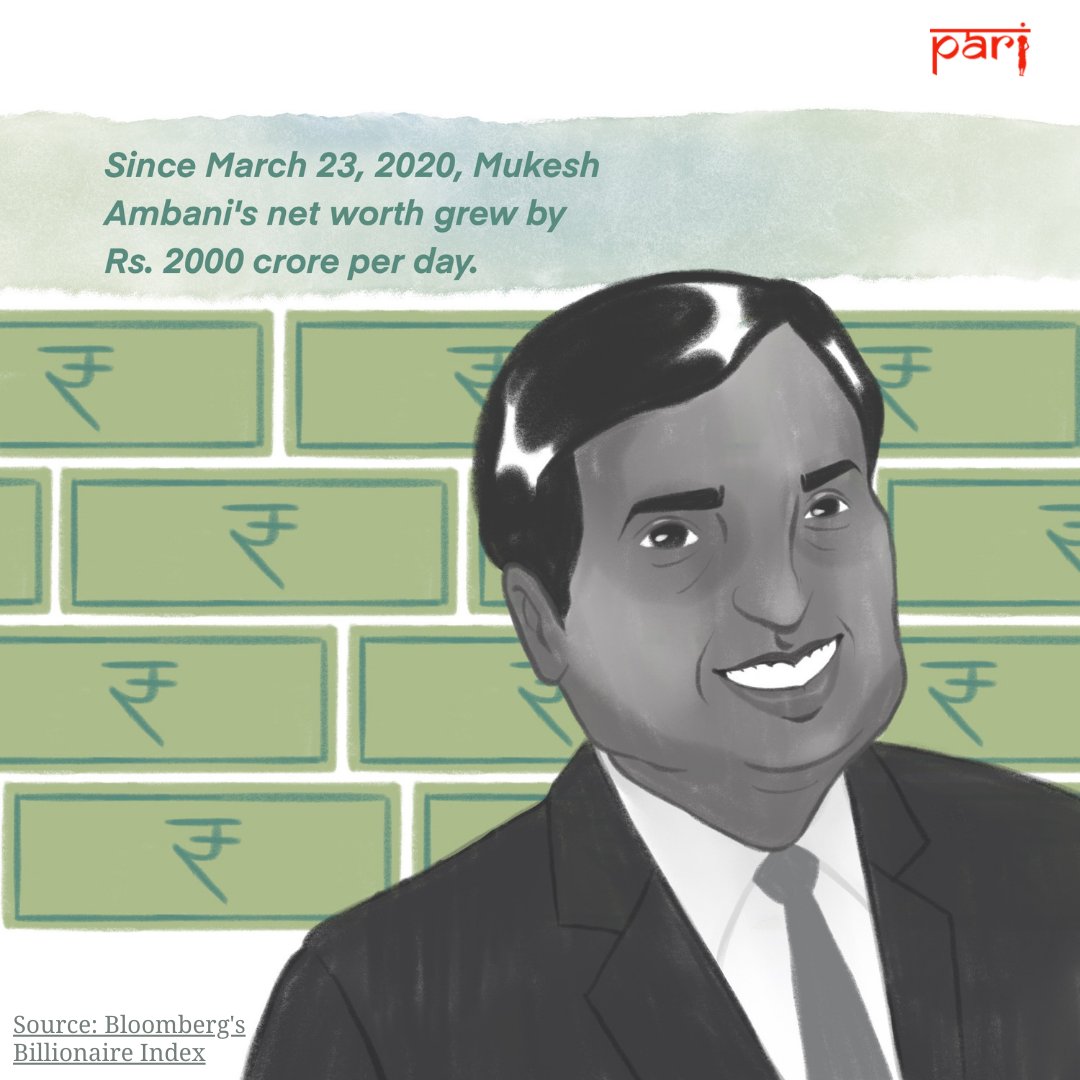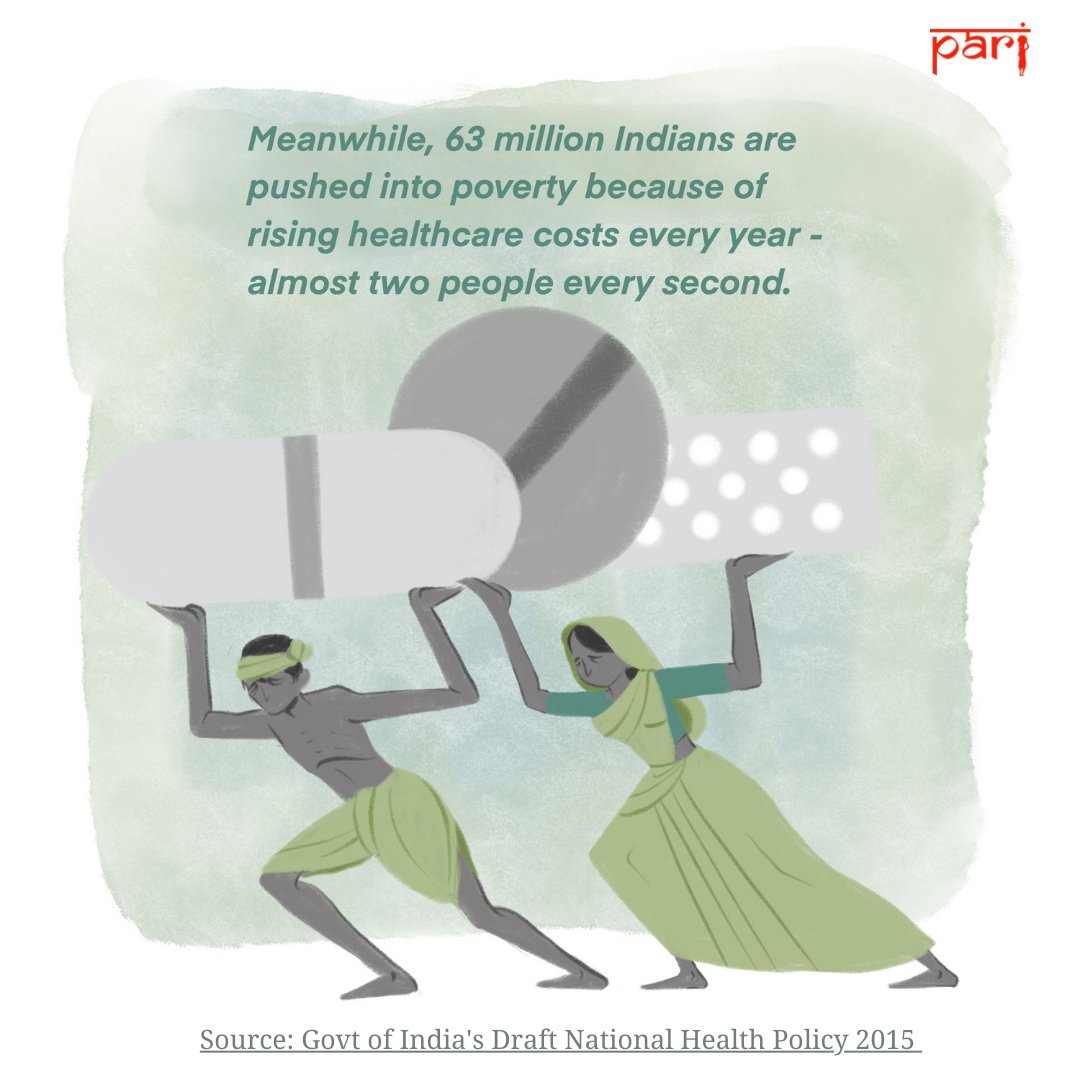
"#Ram is written all over us. So, you see, we are the Ramayana."
The Ramnami sect, originally Dalits, have rejected the #caste system to adopt a bhakti path open to all with Ram at its center.
[Thread]
The Ramnami sect, originally Dalits, have rejected the #caste system to adopt a bhakti path open to all with Ram at its center.
[Thread]

The Ramnami of Chhattisgarh were originally Dalits who rejected their caste and adopted a devotional path. They have distinctive tattoos and cultural norms, but the younger generation is giving up these practices. 

Pandit Ram Das, 90, of Kodava village, never went to school, but he can write in four languages, he says. He rewrote parts of Tulsidas' Ramcharitmanas, the holy book of the Ramnami, wherever it indicates class and gender inequality. 

Tirth Ram, of Khapradih village in Janjgir-Champa district, has a college education and was the sanchalak or director of the Samaj’s council for many years. Funds come from donations and government grants. 

The Ramnami gather for a three-day Bhajan Mela in Sarsiwa village in Raipur district at the end of the harvest season in December-January. 

They erect a jayostambha (a white pillar with 'Ram' inscribed on it), chant from the Ramcharitmanas all day, and people come to pay their respects to the book. 

Mukti Ram, a widow who lives in Nawrana, a small village near Bilaigarh village, is a homemaker; her son is a farmer. 

Punia Bai Ram, 90, is the oldest purnanakshik in Gorba village on the Bhatgaon-Champa road. She is a purnanakshik or a Ramnami tattooed all over her body. 

While singing chaupai (quatrain verses) from the Ramcharitmanas, women lead and men follow. A ghunghru is a clutch of bells used to keep the rhythm while the Ramnamis sing chaupai (quatrain verses) from the Ramcharitmanas 



Ramnamis stand out because of their attire – they wear a peacock-feather mukut (head-dress) and an odhani (shawl) with ‘Ram’ printed on it.
Full Story: Available in 6 languages
ruralindiaonline.org/articles/in-th…
Full Story: Available in 6 languages
ruralindiaonline.org/articles/in-th…

• • •
Missing some Tweet in this thread? You can try to
force a refresh









